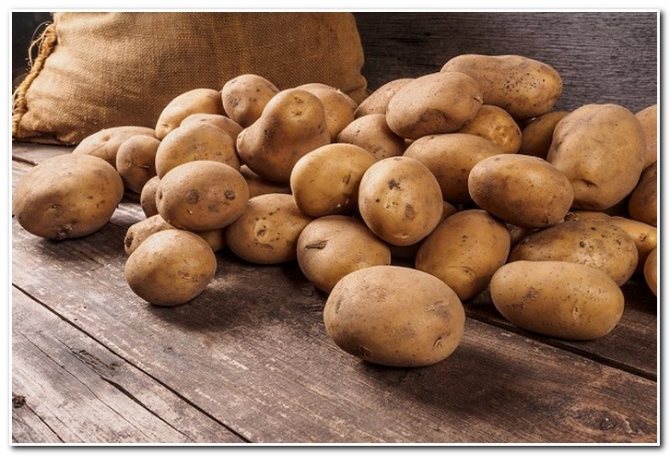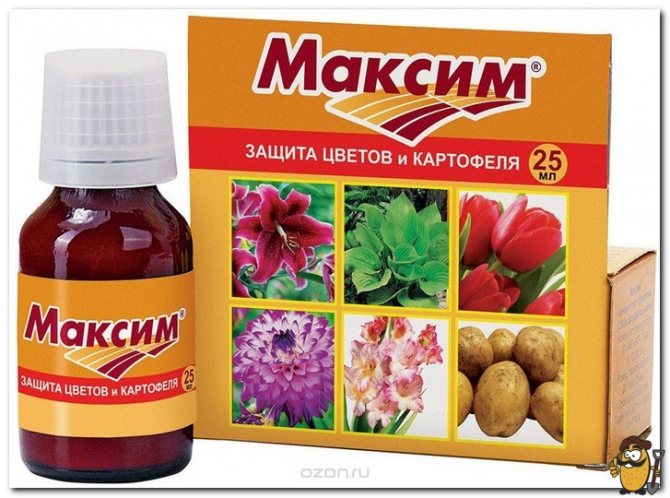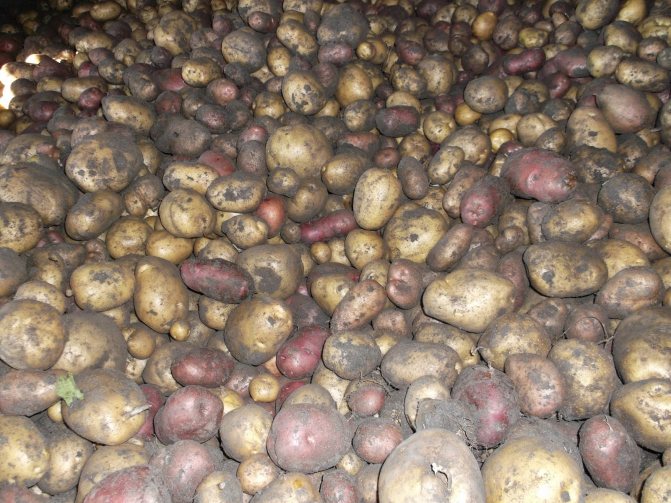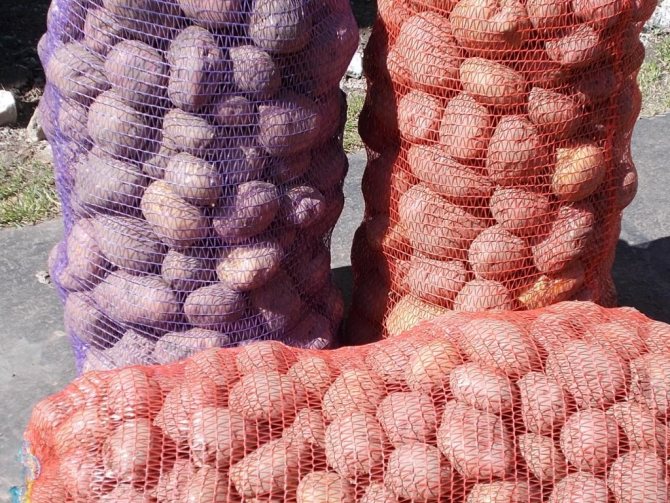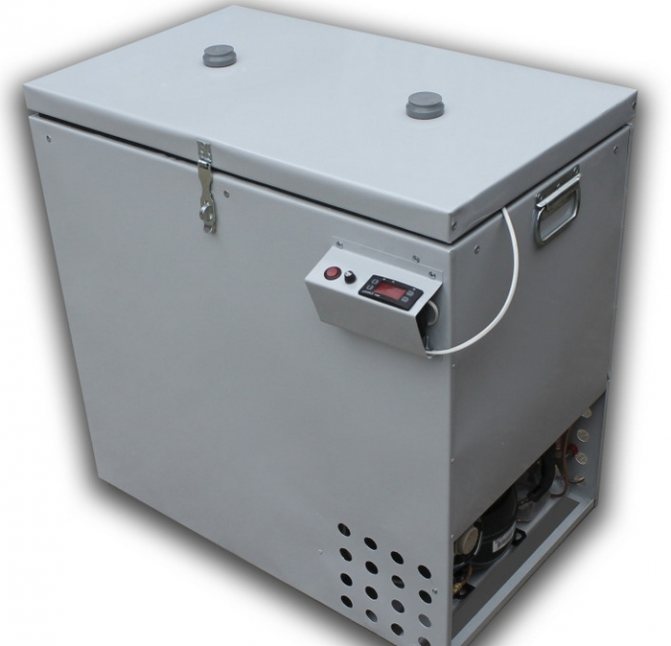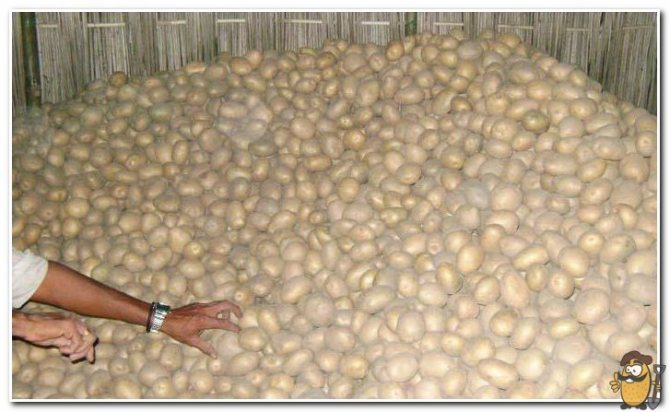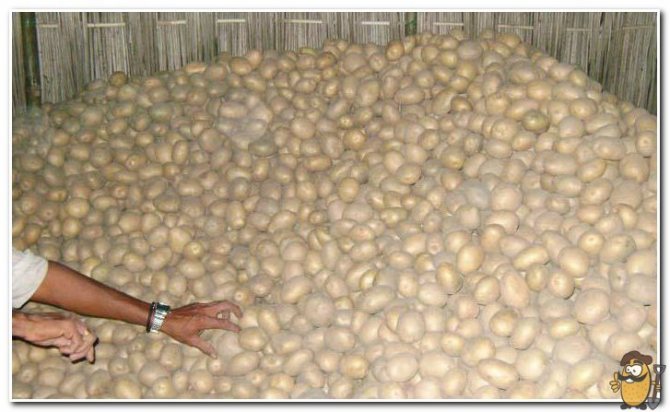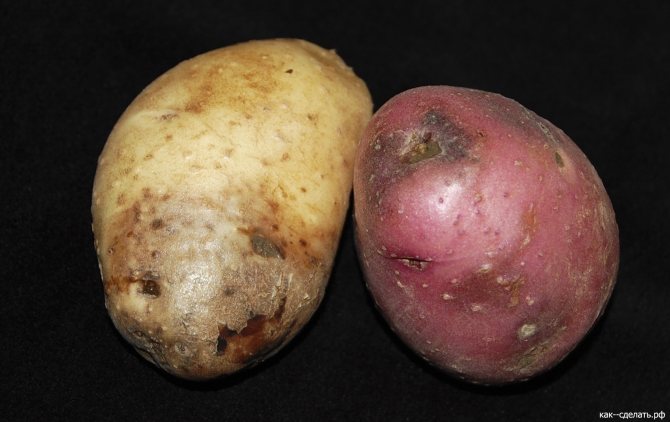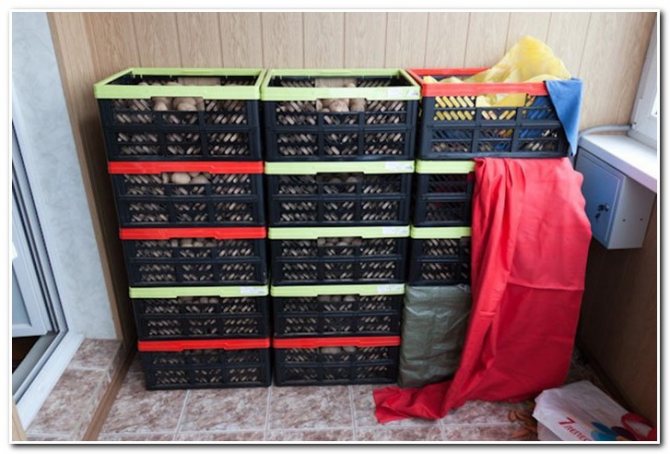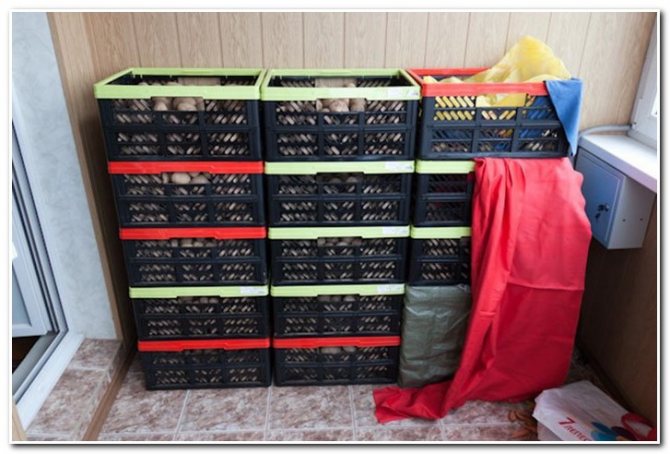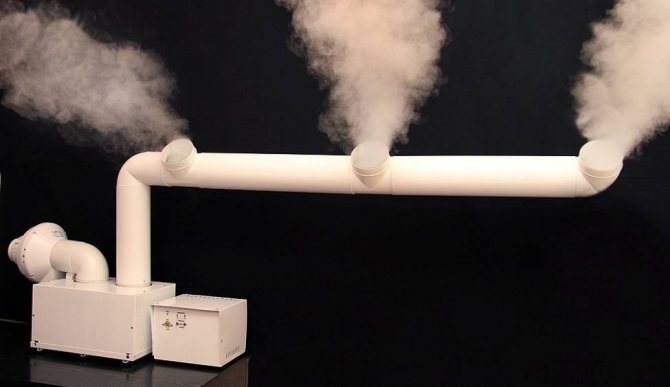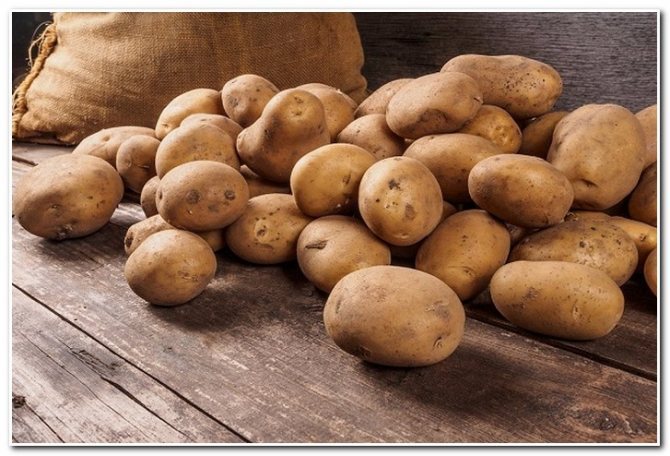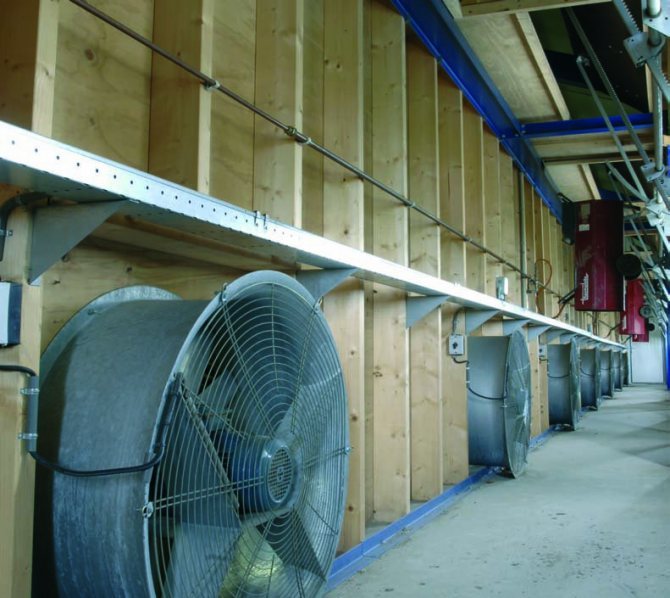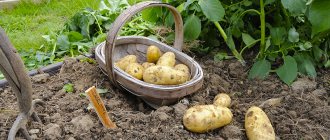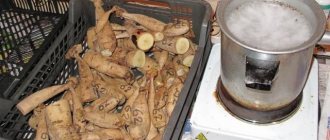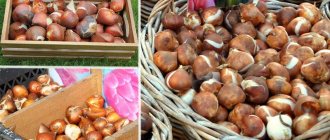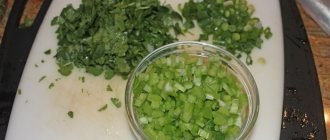Potatoes are one of the few vegetables that, when properly stored, are able to last until the next harvest intact, safe and fresh enough. But there are some factors that have a detrimental effect on the condition of the tubers. For example, due to high humidity, potatoes begin to rot, rot and infect neighboring specimens.
Rot passes from one tuber to another, an unpleasant odor appears in the storage. Too high temperature in the cellar also creates a problem: the peel on the potato begins to wrinkle, eyes grow massively. Low temperatures will not be good for potatoes. If the tubers are frozen, the pulp will immediately acquire a sweetish taste and the vegetable will become unsuitable for human consumption.
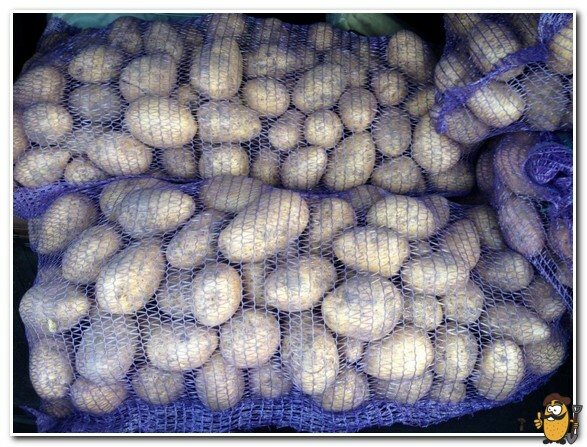
How to store potatoes in the cellar in winter to minimize crop losses? Below are all the secrets of proper storage, which experienced summer residents willingly share.
When to put potatoes in the cellar after harvesting?
First of all, it is necessary to remember that in no case should the recently harvested crop be immediately laid directly into the cellar. This can lead to sprouting of tubers and, as a result, to spoilage of your potatoes. Before sending the entire crop for storage, you need to make sure that the tubers are completely dry.
Immediately after digging, a similar outcome is possible only in warm conditions with relatively low air humidity. However, not everything is so simple here: even when completely dried, the potato tubers can be stored in the cellar or basement only after their temperature approaches room temperature. Overheated tubers placed in a cold cellar can easily deteriorate, the process of decay will begin, associated with a sharp temperature drop.
As for the crop harvested in conditions of sufficiently high humidity, first of all, it is necessary to ensure that all tubers are well dried. At the same time, a dry and well-ventilated area with access to sunlight is ideal for drying.


Important!
Ultraviolet light kills all bacteria that can form on vegetables, so the process of drying potatoes should take place under the sun, and not thanks to electrical appliances. But here it is worth noting that an excess of sunlight will also negatively affect the root crop, the scorching sun can lead to a green tint and damage to the product. Conclusion - potatoes should be dried in the sun during a deep decline in solar activity.
Natural ventilation
After work on insulation, it is important to do natural ventilation. Even if it is a small home cellar. Pipes are installed - supply (at the floor with holes) and exhaust (holes are made at the ceiling). The pipes are located at the opposite walls of the basement. They provide both the flow of cold outside air down and warm air goes up.
If the frost gets stronger, you need to close all the holes with a special shutter, rags, straw, tow. For example, in old basements and cellars, only one hole was often made in the ceiling - a ventilation one.Then the air circulation can be increased in this way.
The pipe (exhaust) that goes out can be extended. Equip with devices that will strengthen the air extraction. They are purchased in construction supermarkets, hardware stores, and markets.
Then, in the exhaust pipe passing through the ceiling, simply insert another one, but of a smaller diameter. The people use for this sewer composite plastic pipes. It will run from the top to the floor of the vault. Here, dry and cold air will flow along the inside, and warm and moist air will be removed along the outside.
If such measures cannot be carried out, then there is another option: make a suspended ceiling from plastic film.
To preserve potatoes until spring, when the frosts are especially strong, it is better to play it safe and cover the tubers with hay or straw. It is a natural, breathable, loose, heat-insulating material.
The principles of the correct arrangement of the cellar
Regardless of the location in which your cellar is located, whether it is in flat areas or in mountainous areas, as well as regardless of climatic conditions, if you plan to use it as a storage for vegetables and various crops, you must comply with the following conditions :
- Purity. Littering in all its forms is strictly prohibited in the cellar: the presence of dust, dirt, foreign odors, the presence of garbage, as well as insects, rats and mice.
- Fire safety measures... The presence of explosive and flammable substances is not allowed.
- Waterproofing... First of all, it is necessary to protect against flooding, the appearance of dampness, as well as the multiplication of various harmful bacteria.
- Ventilation... It needs to be installed to create the necessary microclimate in the cellar, due to which air flows to the root crops. A correct ventilation system prevents the room from being gassed with carbon dioxide and marsh gases.
reference
To make sure that oxygen is available, you just need to light a match. If it does not light up, you should immediately ventilate the room by opening the door or using a fan.
- Lighting. In the cellar, it is imperative to carry out electric lighting, since the use of open fire is strictly prohibited.
Important!
The switch must be installed at a height of at least 1.5 meters from the floor.
Homemade options
If it is not possible to buy a heating cabinet, you can independently equip a warming box.
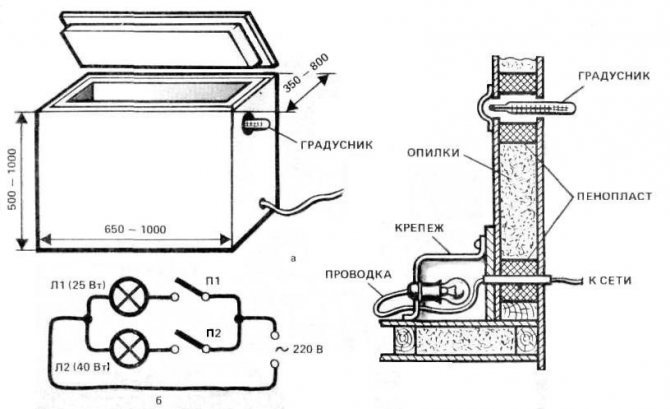

Diagram of a simple box heated on conventional incandescent lamps.
- For this, a double-walled box is constructed, between which small bulbs are placed.
- Such a homemade container should be placed in a dark place.
- Even the slightest illumination should not be allowed, since the access of light can provoke solanine formation.
- As a result of the production of solanine, the potato becomes poisonous, acquires a greenish tint.
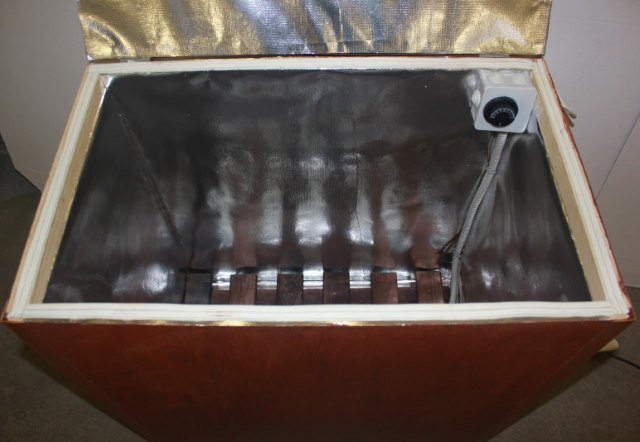

Homemade chest with a thermostat.
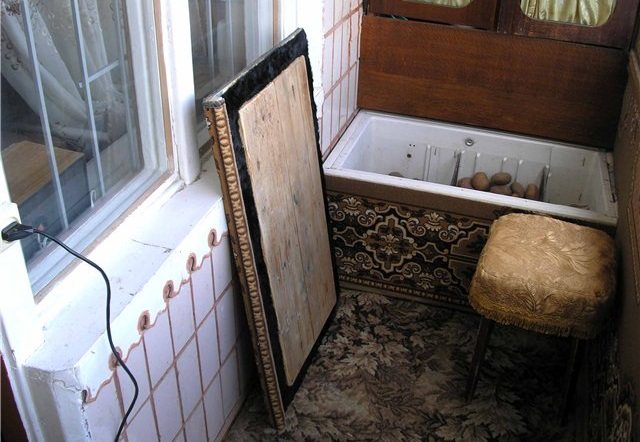

An old refrigerator as a balcony storage.
Storage conditions
Experienced agronomists determine the storage temperature of the root crop in the room, first of all, by its variety. So, a temperature of 1-2 degrees is perfect for varieties such as Nevsky and Ramenskiy, and 2-3 degrees for varieties Oganes and Domodedovsky, 2-5 degrees, in turn, will be an excellent temperature for varieties of potatoes Lorkh and Sotk.
Average favorable temperature: + 2-5 degrees above zero. It is important to avoid frost indoors.
Air humidity plays an important role. Ideal grades are 80-95%.
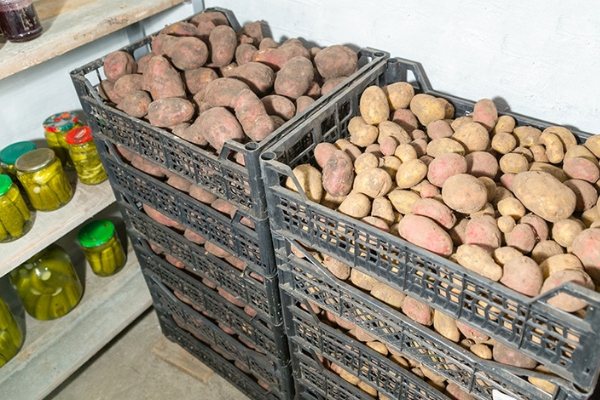

Important!
If the humidity level exceeds 95%, it is necessary to place a box filled with dry wood or coarse salt in the room. This helps to normalize the moisture balance in the cellar.
Spring sprouts
After studying the above material, even an inexperienced owner will know how to properly store potatoes in the cellar. However, with the arrival of spring, the tubers inevitably begin to awaken. The awakening time depends largely on the variety and storage conditions: early varieties wake up in mid-February, late potatoes can be stored unchanged until April. You can slow down the sprouting process by lowering the temperature to + 1- + 20C. If large shoots appear, they should be removed mechanically.


How to store
Preparing storage before planting potatoes
All the necessary procedures for preparing the cellar for storing vegetables must be started in advance, about a month before the start of harvesting:
- The cellar is cleaned of all kinds of vegetable residues, dust and dirt;
- Carefully inspect the alleged storage for cracks and various holes through which harmful rodents could get through;
- Pre-disassembled racks and boxes are put out on the street, washed thoroughly with soapy water and left to dry in the sun;
- If you are just starting to build a cellar, then it is not recommended to bury the structure in the ground more than half. This is primarily due to the fact that in the spring, groundwater can reach a critical height, which will thereby lead to flooding of your storage facility, completely destroying the entire crop.
- It is also recommended to insulate the room in advance in case severe frosts are not rare in your area in winter, while the floor is insulated with additional wood flooring. Cementing the premises, as well as laying linoleum, is extremely undesirable due to the possible formation of mold.
- Before placing the dried and selected potatoes in the cellar, the room must be checked for several days.
Preparing potatoes for storage
- Removal of earth residues and drying. Potatoes must be dried immediately before storage. At the same time, you should not wash the root crop before storing, as this can lead to rotting of the potato. A completely acceptable option would be to easily peel the tubers from the soil, of course, if it is present in excess. Further, in the storage, it is necessary to prepare wooden trellis boxes or canvas bags in which the potatoes will be directly stored.
- Sorting. After these procedures, you should start immersing the potatoes in the storage. In this case, the potatoes must be sorted out in advance. Because even one spoiled root crop can cause rotting of the rest of the crop placed in the same box.
- Damp protection. You can eliminate the possibility of dampness and protect the potato tubers from a severe cold snap using any improvised items, such as old blankets, blankets or straw.
Why peeled potatoes darken and lose flavor
The tubers always darken after cleaning. This happens for the following reasons:
- Raw potatoes contain sugar (about 0.9%). When interacting with amino acids (enzymes), they are destroyed, there is a change in organoleptic properties: taste, color, smell. Therefore, the less sugar in the tubers, the longer the potatoes will be stored.
- Potatoes also contain trace elements - iron, calcium, magnesium, potassium, sodium, etc. When they interact with oxygen, an oxidation reaction occurs, the product gradually turns black and loses its taste. If you block the oxygen supply, the process slows down.
There are several ways to slow down blackening and spoilage. Some of them are acceptable only in large industries, while others can be used in a regular kitchen.
Methods for storing potatoes
In canvas bags. Storing potatoes in canvas bags is perhaps one of the most traditional ways.The advantages of this method include, first of all, the possibility of air circulation between the tubers, as well as the elimination of the risks of hypothermia of the potatoes. The bags are arranged in rows on wooden pallets that are about 150 mm high.


In grids. As in the previous version, nets with potatoes are placed on pallets, however, with the difference that they need to be additionally protected from hypothermia by covering them with straw or old blankets.
On the shelves. When using racks for storing potatoes, they are placed in boxes, boxes, containers or other similar containers, which in turn are placed on the shelves. On average, there are at least one or two boxes per shelf. It is also important to properly prepare the storage racks for your crop. Thus, the distance from one rack to another must be at least 50 mm, and the distance from the rack to the wall must be at least 30 mm.
In bulk, in bulk. You can store potatoes in regular bulk. The tubers are placed on pallets, the height of the embankment should not be more than 1.3 m.
In boxes. Most often, this option for storing potatoes is associated with the use of lattice boxes with gaps between the slats of about 4 cm.At the same time, there should be at least 60 cm from the edge of the upper box to the ceiling.And the gaps between the rows of boxes can be about 10 cm.
Loose, granary method. It is used to ensure the safety of fruits laid as seeds for the next year. In this case, the layer of seed potatoes should not exceed one meter, so that air can circulate among the tubers.
Reviews of gardeners
Some gardeners advise, before planting, chop 1 kg of garlic in a meat grinder without removing the peel and stir in 10 liters of water. Soak potatoes for 8-12 hours. Such processing, according to experience, increased the yield by 1.5 times.
Another tip from experienced growers is to combine multiple germination methods. First in the light, then the potatoes are placed in wet sawdust, that is, artificially creating darkness. This helps the potatoes start growing immediately when planted and can be harvested two weeks earlier.
There are craftsmen who germinate potatoes from seeds, which makes it possible to get a larger harvest, since there is no need to leave some of the potatoes for planting.
To speed up germination, it is recommended to make cuts in the potatoes. You can make an incision across, leaving 1 cm, or along, leaving 1.5 cm. Then there will be more sprouts and they will appear faster.
Tags: potatoes, cellar, why, sprout
About
«Previous post
How to preserve the crop during storage
From rodents and insects. Speaking of pests, such as rodents or insects, it is worthwhile to understand that your cellar can be secured only by initially examining the intended storage for cracks and various holes through which harmful animals can get through.
From germination. Not all varieties are suitable for long-term storage, in this case only varieties of medium and late ripening are suitable. This is what will keep your potatoes from sprouting.
From disease. In this case, the use of chemicals will help great. Often, in order to preserve their harvest until next spring, experienced agronomists treat it with various antifungal drugs.
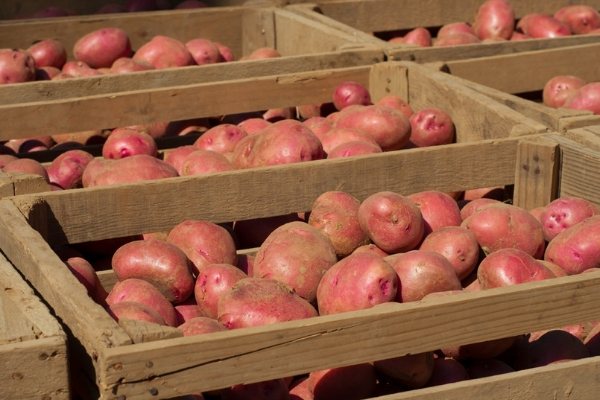

Alternative therapy
Let's return to the sprouted ware potatoes, which we store in bulk. How are sprouts coped with in the villages? For a five to six year old child, they put on rubber boots and ask him to dance on a heap of sprouted tubers. Of course, under the mass of the little man, the sprouts break off, and the tubers remain alive. This is how they knew how in the old days they knew how to preserve potatoes until spring.
It turns out that this technique is more effective than the usual bulkhead of potatoes with getting rid of the shoots. And what's interesting is that the potatoes stop growing. There is a lot to learn to preserve potatoes.
Common mistakes
Error 1. Do not take into account the type of potato.
How to avoid: Choose potato varieties for long-term storage.
Mistake 2. Keeping low quality potatoes on par with good specimens
How to avoid: Do not neglect quality sorting of potatoes before storage.
Mistake 3. Store potatoes with other vegetables.
How to avoid: Arrange the space so that all vegetables are kept separate from each other.
Error 4. You think that potatoes can be stored in any conditions.
How to avoid: Keeping potatoes in a cool, dark room is ideal.
Error 5. Do not inspect stored potatoes
How to avoid: Potatoes should be sorted into storage. Remove diseased, decaying tubers. It is necessary to remove not only the damaged tubers themselves, but also lying nearby (pick them up first).
The potatoes are covered with condensation, what to do
If condensation has formed on the potatoes, it can be sprinkled with ground chalk. The substance is harmless and quickly absorbs moisture. On top of the potato compartments, put beets, various root vegetables, which will take the whole blow.
If you find a focus of decay, remove the affected tubers from the cellar to prevent the spread of rot. Also take out the closest to the rotten tubers to dry. And first of all, use it in food.
Green seed tubers that are in direct contact with rotten roots are not used for food and animal feed. They need to be washed in warm running water and sprayed with 0.02% vitriol. Then dry in a cool place. This way you will not break the hibernation.
Protection against moisture and freezing
To ensure that the temperature inside the room never drops below 0 ° C, it must be properly equipped: insulate the door, sheathe it with any suitable heat-insulating material. In shallow cellars, you also need to insulate the walls.
Supply and exhaust ventilation can save potatoes from rotting caused by excessive moisture. If it is not there, you will need to regularly ventilate the cellar manually. You can reduce the moisture in the vegetable store by placing containers with lime or sand in it, which will absorb moisture.
Preparing for landing
It is required to consider in the article how, before planting, you can sprout potato tubers. This method will allow you to get early potatoes for the summer table, and will provide a good potato harvest in the fall.
To do this, the tubers need to be placed in the light for a while so that the sprouts hatch. They should be at least 1 to 2 cm long. Tubers with strong shoots should be selected for planting. Potatoes that have been exposed to light for a long time can no longer be eaten. Green tubers contain corned beef, a substance that can cause food poisoning.
The best potato varieties for different regions
Do not forget about the rules for choosing the right potato variety, depending on the region where it is planned to grow.
For the northern regions of Russia, the varieties Aurora and Antonina are well suited, suitable for long-term storage and having good resistance to late blight. In these regions, the Nevsky variety is actively cultivated, which has the highest yield among Russian varieties.
In the middle Volga region of Russia, the Alekseevsky variety grows, as well as Vershininsky, which is excellent for frying. In Siberia, where the weather conditions are especially difficult, the varieties Baron and Bravo are grown, which are distinguished by high yields.
In the Far East, the varieties Snow White and Valentina are popular, which can be called universal. In the south of the country, Impala and Jarlu are grown - early maturing varieties.


